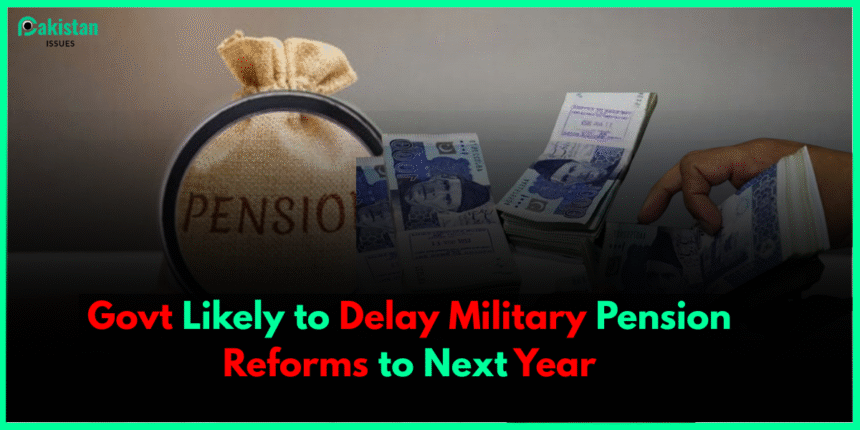In a move that has sparked both relief and unease, the federal government plans to postpone the rollout of contributory pension reforms for military personnel until at least July 2026. According to financial sources, implementation of this major change—initially expected in the upcoming budget—has been pushed back, with officials pointing to a lack of internal readiness and the need for IMF clearance.
Why the Delay Matters
The proposed Contributory Pension Scheme, introduced last year for civilian employees, requires civil servants to contribute 10% of their basic salary, matched by a 20% contribution from the government. The aim is to stabilize ballooning pension liabilities—which now exceed Rs1 trillion—and ease pressure on state finances.
However, applying the same structure to armed forces personnel has proven more complex. According to a Tribune report, no clear administrative mechanism is in place yet, and the IMF has not required immediate inclusion of the military in the scheme.Officials say that until a framework is finalized and approved, practical implementation cannot begin.
Budget Implications
In the June 2025–26 budget, the government allocated a staggering Rs 662 billion for military pensions—two-thirds of the overall pension bill of more than. This hefty outlay has compelled finance officials to push for reform, but the absence of a workable system for service members means the burden will remain unchanged for at least another year.
Ministry of Finance insiders confirm that, while civilian staff began operating under the new system as of January 2025, the next slate for the military will likely align with budget planning timelines for July 2026. The pressing need for IMF validation—particularly for large spending cuts—will play a key role in final approval .
Why the Armed Forces Are Cautious
The armed forces present unique organizational challenges. Their hierarchical structure, rank-based pay scales, and early retirement allowances require separate actuarial tables and clear administrative coordination. There are concerns that rushing the transition could lead to legal or pension disputes, disrupting morale and institutional stability—not ideal given national security sensitivities.
Moreover, military leadership has hinted at requiring assurances—both legal and logistical—before signing on to change their pension scheme. That’s why officials say a methodical, phased, and transparent approach is necessary.
Expert Views and Fiscal Outlook
Economists emphasize that the delay is more strategic than evasive. According to pension specialists, shifting service members to a contributory system will slowly reduce off-budget liabilities. However, they also caution that until civil and military personnel are treated equally under the new rules, the overall savings will be limited.
Recent analysis shows that if the current trajectory continues, Pakistan’s entire pension bill—already equal to or exceeding the national development budget—could double in a few years.
Budget experts warn that failing to include the military in reform will force more aggressive measures elsewhere—such as raising retirement age, eliminating annual compounding, or halting multiple pensions for those who return to service after retirement .
Looking Ahead
For now, the military pension scheme remains on the government’s reform checklist, but one of its most significant elements has been shelved—even as civilians move forward. Implementation is unlikely before mid‑2026, pending IMF approval and internal logistics.
Until then, military pensions will continue under the existing model—and with the holiday for reforms comes a fresh risk: without adjustments, the pension bill may crowd out development funds and heighten fiscal pressure.
That said, advocates insist the delay offers a buffer for thoughtful planning. A well‑designed, phased rollout could yield stronger financial results and institutional buy‑in, while a rushed implementation could have unintended consequences. For now, observers in Islamabad will watch how the government navigates the tricky waters between reform urgency and practical readiness.










